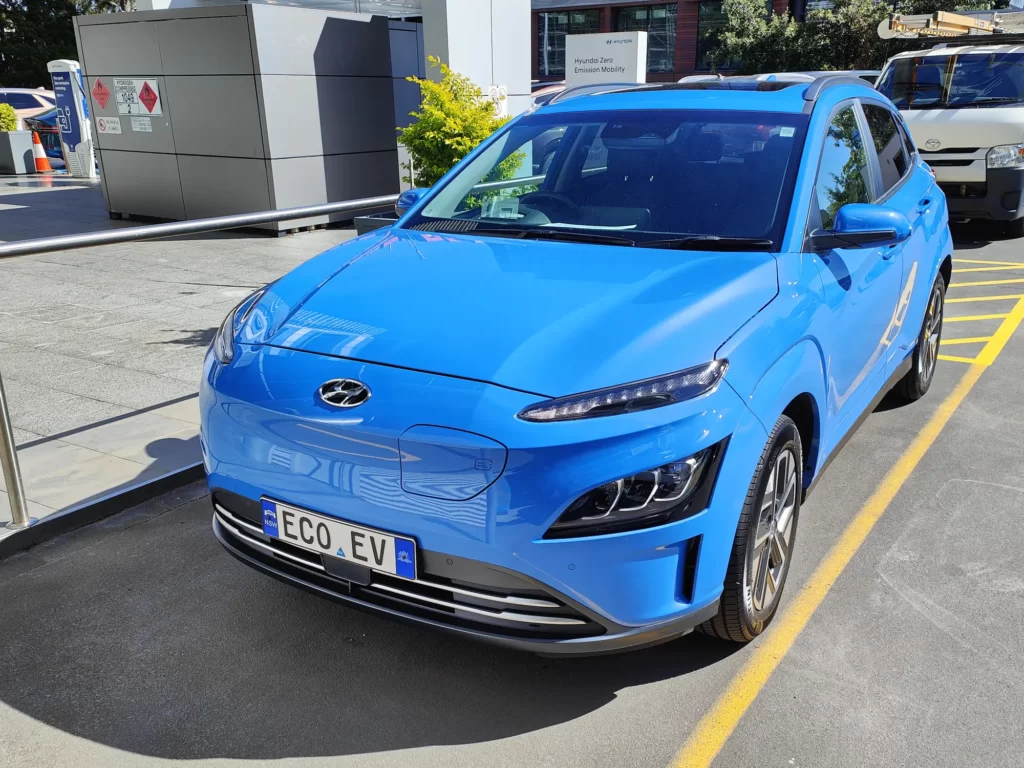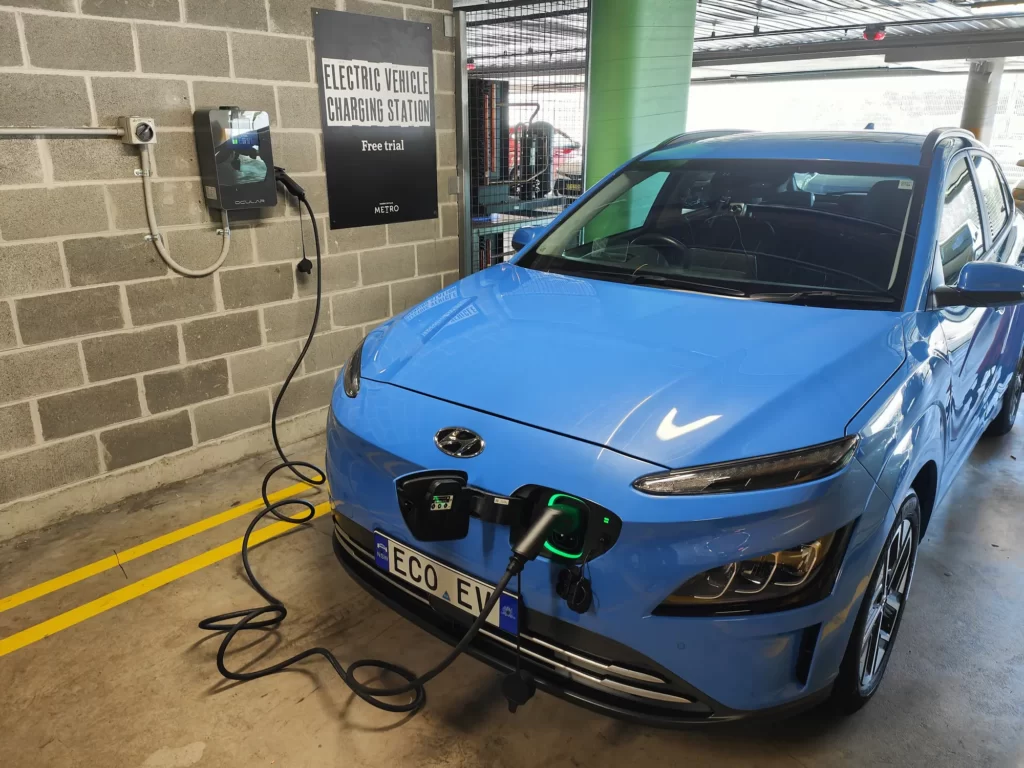I’ve just driven 224km in a Australian Hyundai Kona EV Highlander Standard Range 2021 electric car around Sydney, from short 5km trips to local shops to longer 20-40km drives across the city. These are my top 3 likes and dislikes.
Highlander refers to the top spec version which adds features the Elite doesn’t have like: Heads up display, High beam assist, Front park assist, power seats, LED lights (instead of Halogen) etc. I think it’s odd that a vehicle at this price point doesn’t have LED lights as standard.



I drove all of the time in ECO mode with level 3 maximum regeneration turned on, as I am a hypermiler eco driver by habit.
I just wish this car had full one pedal driving so owners rarely need to step on the brakes.
If you like this car you’ll have to buy it second hand as a Hyundai Australia Spokesperson advised me that:
“Regarding the current model Kona EV, the final production month will be mid July [2023]. However we are no longer taking new orders, our priority is to fulfil the backorders”.
At the time it stopped being sold the Kona EV 2021 was available in these 4 versions (at driveaway pricing for NSW):
- Elite Standard Range – $57,438.34
- Elite Extended Range – $63,438.34
- Highlander Standard Range – $60,938.34
- Highlander Extended Range – $66,938.34
With a relatively small difference between Elite and Highlander pricing, If you want a second hand Kona EV 2021 I would suggest buying it in Highlander Extended Range spec which is capable of 484km WLTP range (possibly more if you Hypermile).
Disclosure: The car was loaned by Hyundai Australia for 11 days to review. I agreed to meet all the associated running costs e.g. tolls, charging etc.
What I Liked
Efficiency – This is really excellent and actually the best of any EV I’ve driven to date. As an example I managed 9.6kWh/100km driving 40km from the NRMA Electric Vehicle Drive Day at Eastern Creek to Sydenham mostly on toll roads.
To prove that wasn’t a fluke I’ve also included a photo of the 9.7 kWh/100km stats from my final 20km drive in the car as I returned it to Hyundai HQ in Macquarie Park driving in stop start somewhat congested traffic.


Range – The advertised range for the Hyundai Kona EV Standard Range 2021 models is 305km WLTP but I actually managed to get 10% more range than that thanks to the cars excellent efficiency.
This means that although this car only has a 39.2 kWh battery it can travel as far as some other brand EV’s which have 10kWh larger batteries.
As a side note the Extended range version of this car actually managed to travel slightly over 1000km on a single charge during an extreme hypermiling experiment by Hyundai at a test track.

Heads Up Display, Driver Screens and Knobs/Buttons – the combination of a well designed HUD, 10.25 inch infotainment touchscreen, digital instrument cluster and lots of handy knobs/buttons to control car features helped to make everyday city driving a breeze. You can choose to use the built-in Satnav, Android Auto or Apple Carplay,

What Could Be Better
Lack of 360 degree cameras – It’s hard to park on my street as it is really old, slopes down to crumbling edges of asphalt, there are big trees growing along the edge within the road boundary and most people have no driveways so we have to park street side.
There is a good reverse camera and on the other sides of the car there are parking sensors but not having 360 degree camera coverage is a weakness at this price point because cheaper cars include it.

AC Charging – As an older design EV it can only charge at a claimed AC rate of 7.2kW. In my testing I achieved 6.4kW. This is mostly a weakness only for potential buyers who don’t have off street parking at their home and rely on public AC / DC chargers.
If you do have off street parking at home in your garage or driveway, it’s not a problem as most home EV chargers are only maximum 7kW single phase anyway.
The standard home power socket Hyundai charging cable is capable of full 10 amp charging, it’s not de-rated to 8 amp or 6 amps like some other cables.



Small Boot – I carried out all the usual luggage I use in readiness for my Kona EV 2021 boot space test (read this to see more details of how much luggage and Bunnings shopping fits in) but didn’t end up putting much inside because this car has a small boot of 332 litres if the back seats are up.
This means the car is suitable for 3-4 person families using it to do day to day commuting, shopping, visiting friends etc.
However while singles and couples wouldn’t have a problem, it’s certainly not big enough to carry lots of things for a 3-4 person family holiday.
Sure you could remove the cargo cover and pack all your luggage to the car roof like some people do but I think it’s quite unsafe to block the rear window vision that way.


Leave a Reply